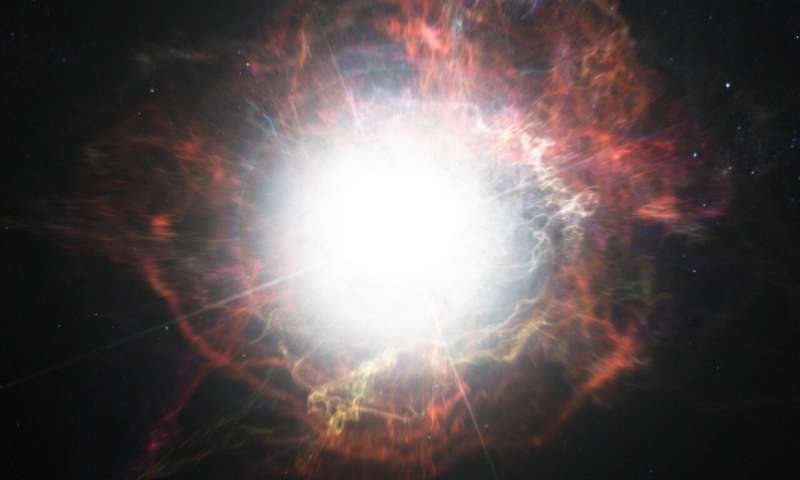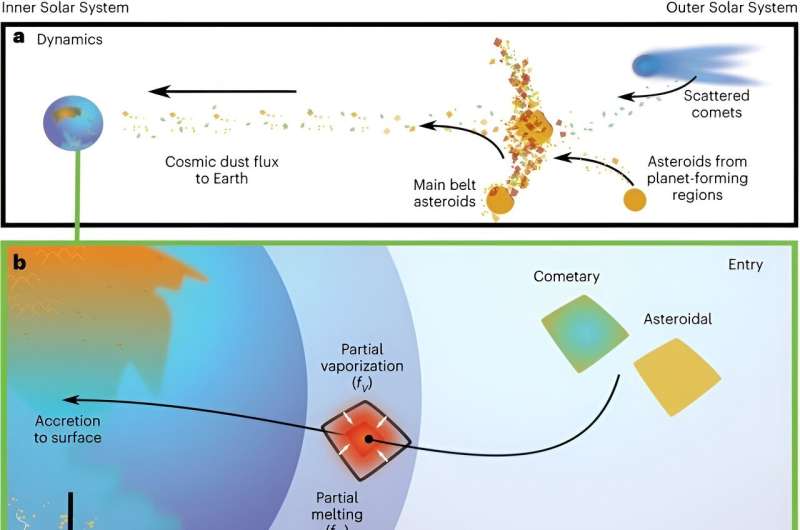This article has been reviewed according to Science X's editorial process and policies. Editors have highlighted the following attributes while ensuring the content's credibility:
fact-checked
trusted source
proofread
Cosmic dust could have helped get life going on Earth

Life on our planet appeared early in Earth's history. Surprisingly early, since in its early youth our planet didn't have much of the chemical ingredients necessary for life to evolve. Since prebiotic chemicals such as sugars and amino acids are known to appear in asteroids and comets, one idea is that Earth was seeded with the building blocks of life by early cometary and asteroid impacts. While this likely played a role, a new study published in Nature Astronomy shows that cosmic dust also seeded young Earth, and it may have made all the difference.
Although we've long known that cosmic dust accumulated on early Earth, it's not been seen as a major source for early life because of how it accumulates. With comet and asteroid impacts, a great deal of prebiotic material is present at the site of the impact. Dust, on the other hand, is scattered across Earth's surface rather than accumulating locally. However, the authors of this new work noted that cosmic dust can accumulate and be concentrated in sedimentary deposits, and wanted to see how that might play a role in the early appearance of terrestrial life.

Using estimates of the rate of cosmic dust accumulation in the early period of Earth and computer simulations of how that dust could accumulate in sediment layers over time, the team looked at how concentrated deposits might form. One of the things they noticed was that while cometary impacts could create a local spike in prebiotic material, the amount deposited by cosmic dust was much higher.
They also found that the melting and freezing of glacial areas could significantly increase the concentration of chemicals from the dust. For example, for early sub-glacial lakes, the concentration of prebiotic chemistry from dust would have been much higher than that found at impact sites. This means that cosmic dust could have played a much larger role in the appearance of life than impacts.
There is still much we have to learn about early life on Earth and how life can form from prebiotic chemistry, but it is clear that life on Earth is only possible because of extraterrestrial chemistry. From dust came the building blocks of life, and so we and every living thing on Earth can trace its lineage back to the early chemistry of dust in the solar system.
More information: Craig R. Walton et al, Cosmic dust fertilization of glacial prebiotic chemistry on early Earth, Nature Astronomy (2024). DOI: 10.1038/s41550-024-02212-z
Provided by Universe Today





















